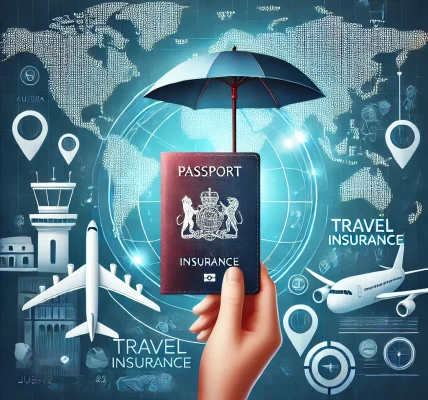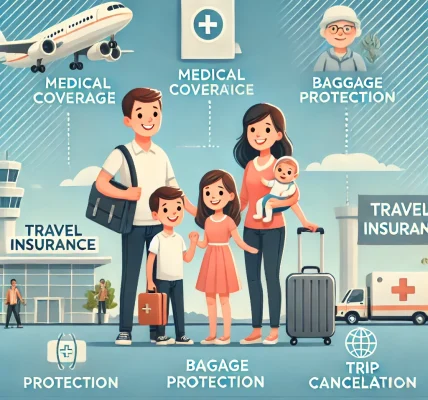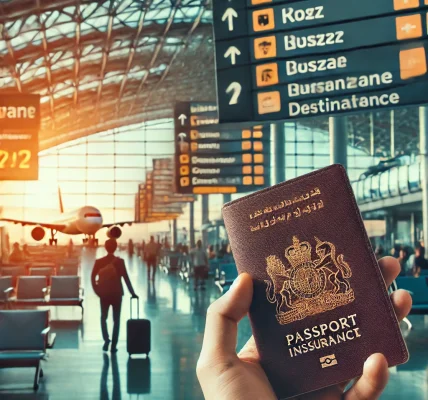Introduction
Traveling can be an exciting and rewarding experience, but it also comes with uncertainties. From flight cancellations and medical emergencies to lost baggage and unexpected disruptions, travelers may face various risks that can impact their trips. This is why choosing the right travel insurance plan is essential.
A well-chosen travel insurance policy provides financial protection, peace of mind, and support in unforeseen situations. However, with so many options available, selecting the best plan for your needs can be challenging. This blog will guide you through the key factors to consider when choosing a travel insurance policy and help you make an informed decision.
Why Do You Need Travel Insurance?
Travel insurance protects you from financial losses and unexpected expenses that may arise during your trip. Here are some key reasons why you should consider purchasing travel insurance:
- Medical Emergencies: Covers hospitalization, medical treatments, and emergency evacuations.
- Trip Cancellations or Interruptions: Reimburses non-refundable expenses if your trip is canceled or cut short due to unforeseen events.
- Lost, Stolen, or Delayed Baggage: Compensates for lost belongings and provides reimbursement for essential purchases.
- Flight Delays and Cancellations: Covers additional expenses incurred due to travel disruptions.
- Emergency Assistance: Provides 24/7 support for legal and travel-related issues while abroad.
Key Factors to Consider When Choosing a Travel Insurance Plan
1. Assess Your Travel Needs
Before purchasing travel insurance, evaluate your trip details, such as:
- Destination: Some countries have expensive healthcare, making medical coverage essential.
- Duration: Longer trips may require extended coverage.
- Activities: If you plan on engaging in adventure sports, ensure your policy includes coverage for high-risk activities.
- Travel Frequency: Frequent travelers may benefit from an annual multi-trip plan.
2. Understand the Types of Coverage Available
Different travel insurance policies offer various types of coverage. The most common ones include:
a. Medical Coverage
- Pays for medical expenses in case of illness or injury during travel.
- Includes emergency medical evacuation and repatriation.
- Some policies offer coverage for pre-existing medical conditions (with conditions applied).
b. Trip Cancellation and Interruption Coverage
- Reimburses non-refundable costs if your trip is canceled or interrupted due to illness, death, natural disasters, or other covered reasons.
- Some policies also cover cancellations due to work-related emergencies or visa rejections.
c. Baggage and Personal Belongings Coverage
- Provides compensation for lost, stolen, or damaged baggage.
- Covers essential purchases if luggage is delayed beyond a certain time.
d. Travel Delay and Missed Connection Coverage
- Offers reimbursement for additional expenses (hotel, meals, transportation) due to flight delays or missed connections.
e. Personal Liability Coverage
- Covers legal expenses if you accidentally cause injury to someone or damage property while traveling.
f. Adventure Sports and Activities Coverage
- Provides protection for high-risk activities like scuba diving, skiing, or mountaineering.
- Usually requires an add-on policy for extreme sports.
3. Compare Coverage Limits and Exclusions
Not all policies offer the same level of coverage. When comparing plans, look at:
- Coverage Limits: Maximum amount payable for medical expenses, trip cancellations, and lost belongings.
- Exclusions: Situations not covered by the policy, such as pre-existing conditions, self-inflicted injuries, or travel to high-risk countries.
- Deductibles: Some policies require you to pay a portion of the claim before insurance kicks in.
4. Check the Insurance Provider’s Reputation
A reliable insurance provider ensures hassle-free claims processing. When choosing an insurer, consider:
- Customer Reviews: Check online reviews and ratings from other travelers.
- Claim Settlement Ratio: Choose an insurer with a high claim approval rate.
- 24/7 Assistance: Ensure they offer round-the-clock emergency support in multiple languages.
- Ease of Claim Filing: Look for insurers with a simple and efficient claim submission process.
5. Compare Prices and Value for Money
While cost is an important factor, the cheapest plan may not always be the best. Look for:
- Comprehensive Coverage: Ensure the policy includes all essential benefits.
- Affordable Premiums: Compare prices but prioritize coverage over cost.
- Add-Ons: Some policies offer optional add-ons like adventure sports coverage, higher medical limits, or rental car insurance.
6. Understand the Claims Process
A smooth claim process ensures you get reimbursed quickly if needed. Check for:
- Documentation Requirements: Understand what documents you need to file a claim.
- Claim Processing Time: Some insurers process claims faster than others.
- Digital Claims Submission: Some companies offer online or app-based claim submissions for convenience.
7. Verify If Your Credit Card Offers Travel Insurance
Some premium credit cards provide travel insurance benefits, but coverage is often limited. Check:
- Medical Coverage Limits – Many credit cards offer only minimal medical protection.
- Trip Cancellation Coverage – Verify if trip cancellations are covered and under what conditions.
- Exclusions – Ensure the coverage is adequate for your trip.
8. Check for COVID-19 and Pandemic Coverage
Since the COVID-19 pandemic, many insurers have updated their policies to include pandemic-related expenses. Look for:
- Medical Treatment for COVID-19
- Trip Cancellation Due to COVID-19
- Quarantine Coverage – Some policies cover additional accommodation costs if you must quarantine abroad.
9. Look for Family or Group Plans (If Traveling with Others)
If traveling with family or a group, consider:
- Family Plans: Cover multiple family members under one policy at a discounted rate.
- Group Plans: Ideal for business travelers, friends, or tour groups, often providing better rates.
Common Mistakes to Avoid When Buying Travel Insurance
- Not Reading the Policy Terms: Always read the fine print to understand coverage and exclusions.
- Choosing the Cheapest Plan: A low-cost policy may lack essential coverage.
- Ignoring Exclusions: Ensure the policy covers all your potential risks.
- Not Declaring Pre-Existing Conditions: Hiding medical conditions can result in claim denial.
- Delaying the Purchase: Buy travel insurance as soon as you book your trip to get full cancellation coverage.
Conclusion
Choosing the best travel insurance plan requires careful evaluation of your travel needs, coverage options, and policy terms. A well-chosen policy ensures you are protected against financial risks, medical emergencies, and trip disruptions.
Before purchasing, compare multiple plans, check coverage limits, and read customer reviews to find the most suitable policy. Investing in the right travel insurance ensures a worry-free and enjoyable trip. Safe travels!




